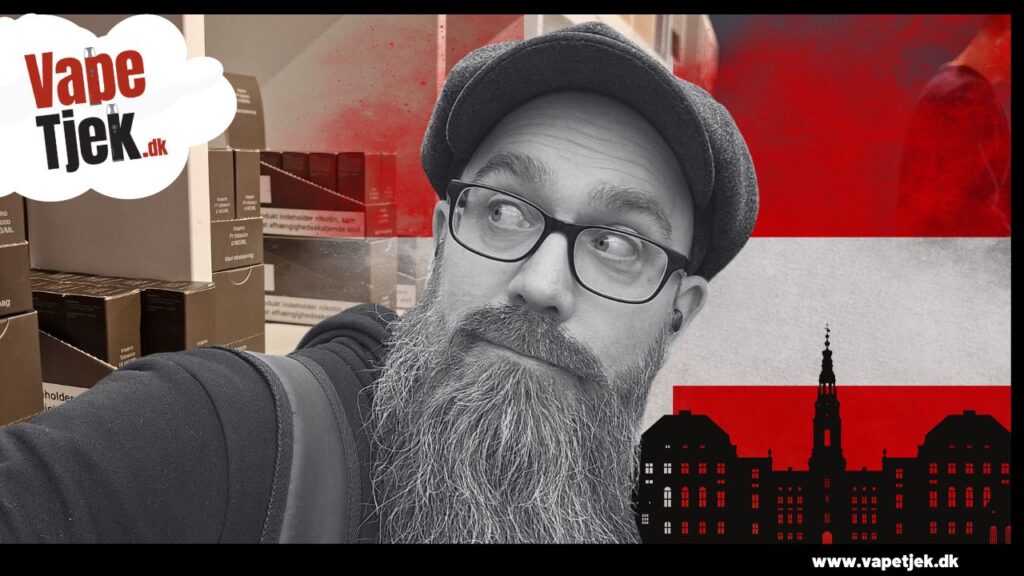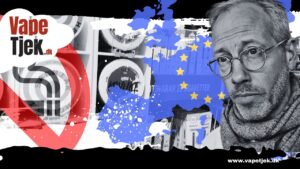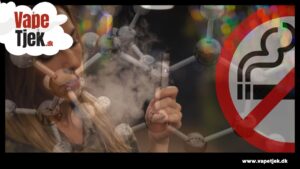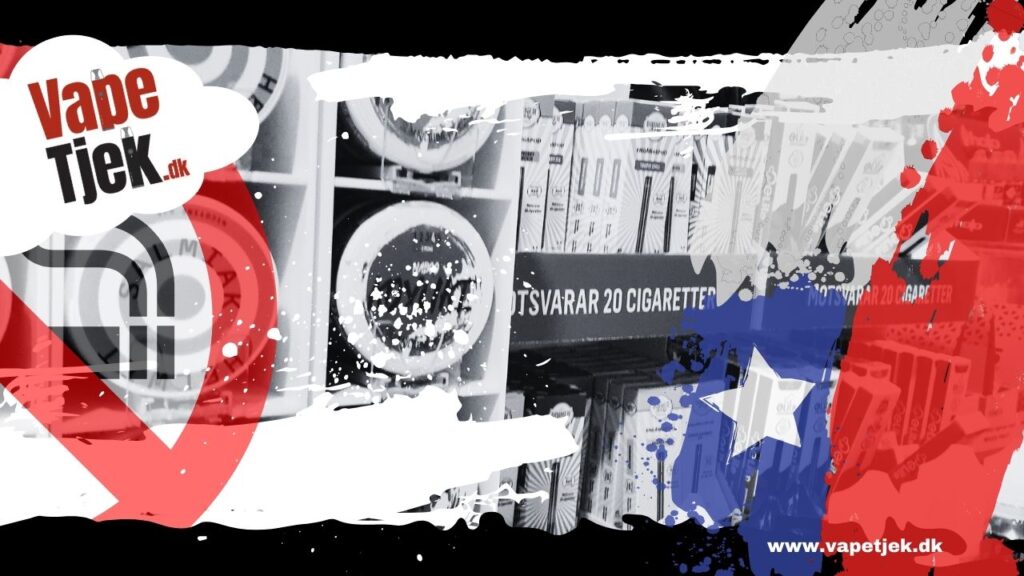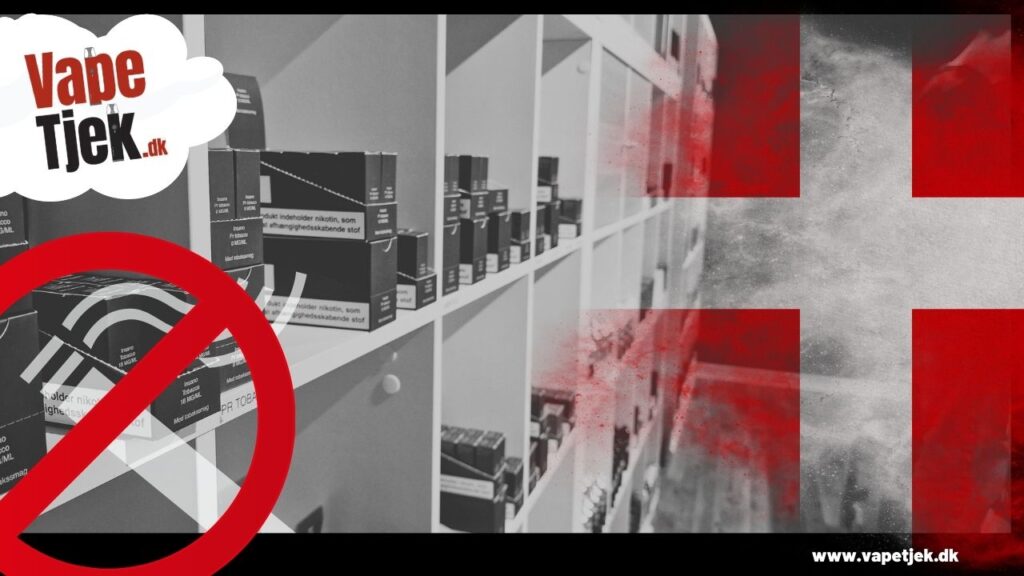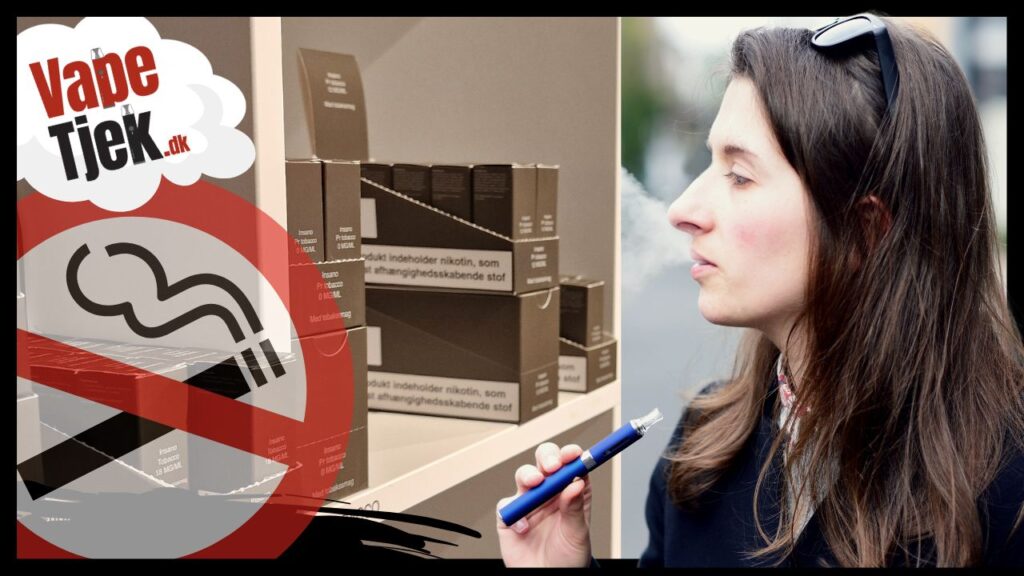Swedish online media Vejpkollen has crossed the Sound and launched a Danish version, Vapetjek. It covers news about vapour and smokeless nicotine products - from the users' perspective.
- Just like in Sweden, but in a completely different context. The goal is to create a voice for those who are most directly affected by the Danish debate and policy in this area," says editor-in-chief Stefan Mathisson.
In Sweden, Vejpkollen has evolved into a relatively unique journalistic platform for news about e-cigarettes, snus, nicotine pouches, harm reduction and the political battleground that surrounds it all. But it started small - and very personal for the founder.
- I've been vaping for ten years and stopped smoking myself with the help of e-cigarettes. Before that I smoked a packet of cigarettes a day since I was 14," says Stefan about his journey into the vaping world.
He quickly became interested in the political and health discussions surrounding e-cigarettes and harm reduction. Especially the fact that the debate is often characterised by strong opinions and misinformation.
Journalist turned steam activist
Stefan has a background in journalism and has worked most of his life in a newsroom - but his passion for steam took him in a new direction.
- I switched tracks and took a job behind the counter in a newly opened vapour shop. I wanted to help people quit smoking. It felt more meaningful than writing about something that didn't affect me personally. Maybe it wasn't a career - at least not right then and there," he says with a laugh.
But he soon found a way to combine journalism with his interest in steam: first via a blog.
- I stood in the shop and helped customers put their cigarettes on the shelf, and I started to delve into research and politics. But in 2019, something happened: the EVALI scandal in the US. Several deaths were linked to vapour - however, it later turned out that these were not regular e-liquids, but THC liquids (cannabis) mixed with vitamin E acetate, which cannot be inhaled safely. It was pure misinformation that quickly spread.
The media missed the mark
According to Stefan, the journalistic coverage in Sweden - and many other places - was severely lacking.
- Few people could distinguish between regulated nicotine products and illegal THC products. As a result, people were scared - many came into the store fearing for their lives because they had been vaping.
Stefan spent all his spare time answering questions in online forums and explaining the research behind it. Eventually it became too much - and he created the blog Vejpkollen to gather knowledge in one place. It grew quickly.
- Six months later, it was more of an online newspaper. I was still working in the vape shop, but writing articles almost every day.
From blog to full-time media
His breakthrough came when he received a scholarship to a conference on injury reduction in Poland. It was the start of a half-time position as editor - and later full-time.
- I also started getting freelance assignments for associations and organisations - everything from course material to consultation responses. And suddenly I was running a newspaper full time.
Vapetjek.dk - a Danish platform
Now it's time for Denmark, where Vapetjek.dk has gone live. The website publishes daily content - some translated from Swedish, others written specifically for the Danish market.
- I've always covered the entire Nordic region. Vaping is widespread in Norway, Finland and Denmark - and the politics are very similar to Sweden. It's typical "good guys versus bad guys": the industry that wants to sell addiction versus those who want to protect children. It leaves no room for nuance - and marginalises users who are actually trying to reduce harm.
- The media plays along and allows the reporting to be controlled by groups that focus on youth use, based on relatively thin research. It's highly politicised," says Stefan.
Why Denmark?
- Denmark has always had a different approach to Sweden. Ironically, Sweden is often called the "land of prohibition" - but when it comes to vapour, it's actually Denmark that has the most bans and restrictions: flavour bans, neutral packaging and the like. That makes it a different playing field.
- However, the vapour culture is similar to the Swedish one: enthusiastic, shop-created and with many strong user voices. And it is precisely those voices that we want to highlight. What is it like to run a vapour shop in Denmark? How does the legislation work? What happens to nicotine pouches, which in Denmark are referred to as deadly - but in Sweden are groceries?
Differences in culture and tradition
One of the goals is also to bridge cultural differences. In Sweden, alternatives such as snus and nicotine pouches have long been available. In Denmark, vapour has been the users' only option for a smoke-free alternative.
- Therefore, vapour also becomes a kind of symbol of harm reduction. Nicotine pouches are starting to appear in stores, and it's important to shed light on the development from the user's perspective - something the big media rarely do. They focus almost exclusively on children and flavour or activist research," says Stefan.
Danish name - with help from AI
The name Vapetjek came about almost by accident.
- "Vejpkollen" makes no sense at all in Danish. I tried the worst thing you can do: I threw it into ChatGPT - and out came "Vapetjek". Then I asked some Danish vapers if it made sense, and they said "more or less". That was good enough for me," laughs Stefan.
Local anchoring sought
Stefan hopes to find Danish writers soon.
- I've spent years trying to find people in Sweden who can write about this in a qualified way - and it's not easy. So in Denmark, the first priority is to find local writers. Right now, Swedish freelancers are helping out and we're getting the texts translated. But it has to be Danish for Danes.
CHRISTIAN EGEFUR
FREELANCE WRITER
